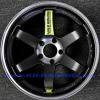Announcements
-
Similar Content
-
Latest Posts
-
As well as being risky WRT tipping off anyway. Yeah, I wouldn't expect it to move. Just measure from the rear one to the front one on the good side, then measure that same length on the wrecked side. You will find the notches in the pinchweld, and the jacking pad. Just spray a spot of marker paint or something there.
-
but any other area than the bulge you are talking about will just cave in then? The front driver side is pretty bent so I don't know if that will work the way it is now. I can still kinda make out where that bulge is/was but it looks like the position of it also changed due to all the mistreatment? Hard to tell
-
Absolutely. Look very closely at the photo (of yours) that I took my second snip of. See how the sill is thicker material right behind the pinchweld, where the two notches are? That is the factory reinforced area for lifting. That pad is supposed to carry the weight. The factory jack (go look at it, and how it interfaces with the car at the pinchweld) shows you exactly how the load is carried from the car to the jack to the ground.
-
if need be I guess I will, yeah. Just to be clear, it's okay to use the sill area around the jacking points for loading, meaning the actual pinch weld or jacking point just sits in the slot without taking on any weight?
-
No. No it can't. It will absolutely end badly. There's no need for it, so there's no need to create the risk. Mitigating a risk that didn't need to be there in the first place is even dumber than mitigating a risk that could be engineered out in the first place. And the risk has already been engineered out.
-






Recommended Posts
Create an account or sign in to comment
You need to be a member in order to leave a comment
Create an account
Sign up for a new account in our community. It's easy!
Register a new accountSign in
Already have an account? Sign in here.
Sign In Now